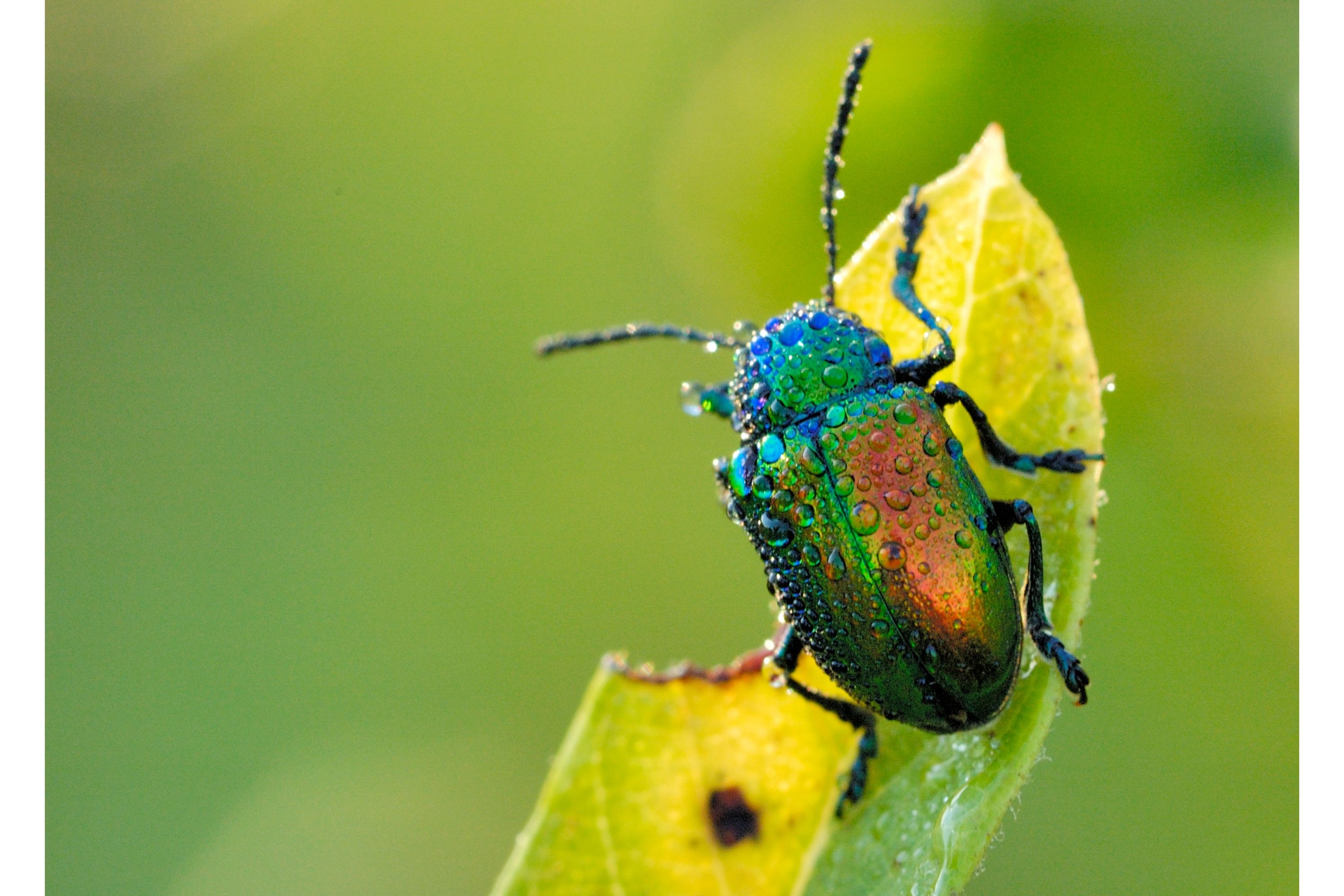Japanese beetle
(Popillia japonica)

Description
The Japanese beetle (Popillia japonica) is a species of scarab beetle. The adult measures 15 mm (0.6 in) in length and 10 mm (0.4 in) in width, has iridescent copper-colored elytra and a green thorax and head. It is not very destructive in Japan, where it is controlled by natural predators, but in North America, and partially in Europe, it is a noted pest of about 300 species of plants including rose bushes, grapes, hops, canna, crape myrtles, birch trees, linden trees, and others. The adult beetles damage plants by skeletonizing the foliage, that is, consuming only the leaf material between the veins, and may also feed on fruit on the plants if present, while the subterranean larvae feed on the roots of grasses. Adult P. japonica measure 15 mm (0.6 in) in length and 10 mm (0.4 in) in width, with iridescent copper-colored elytra and green thorax and head. A row of white tufts (spots) of hair project from under the wing covers on each side of the body. Popillia japonica is native to Japan, but is an invasive species in North America and in Europe. The first written evidence of the insect appearing within the United States was in 1916 in a nursery near Riverton, New Jersey. The beetle larvae are thought to have entered the United States in a shipment of iris bulbs prior to 1912, when inspections of commodities entering the country began. As of 2015, only nine western US states were considered free of Japanese beetles. Beetles have been detected in airports on the west coast of the United States since the 1940s. As of 19 July 2013 Japanese beetles had not been found in Wyoming, however on August 17, 2020 the first finds were made in Wyoming, specifically at Kendrick Park in Sheridan. The first Japanese beetle found in Canada was in a tourist's car at Yarmouth, arriving in Nova Scotia by ferry from Maine in 1939. During the same year, three additional adults were captured at Yarmouth and three at Lacolle in southern Quebec. Japanese beetles have been found in the islands of the Azores since the 1970s. In 2014, the first population in mainland Europe was discovered near Milan in Italy. In 2017, the pest was detected in Switzerland, most likely having spread over the border from Italy. Swiss authorities are attempting to eradicate the pest. Only three were found in Washington State, USA in 2020, but then from late June to September 3, 2021 there were over 20,000 found in Grandview alone.
Taxonomic tree:







